Meet an Educator is a monthly series by Early Bird, where we feature the work of educators across India who are actively spreading the joy of birds and nature. This month’s featured educator is Abhishek M Palya, a nature educator with the Holématthi Nature Information Center.
The original Kannada version of this interview can be found here.
Do tell us about yourself, where you are from, and your work
Hi, I am Abhishek. I am from Palya village which is adjacent to Kaveri Wildlife Sanctuary in Karnataka. Since 2018, I have been working as a Nature Educator at the Holématthi Nature Information Center established by the Holématthi Nature Foundation at the edge of the Malai Mahadeshwara Wildlife Sanctuary. Here, I conduct environmental conservation programmes for local communities, school and college students, Gram Panchayat members, forest, police, fire and other government department personnel.
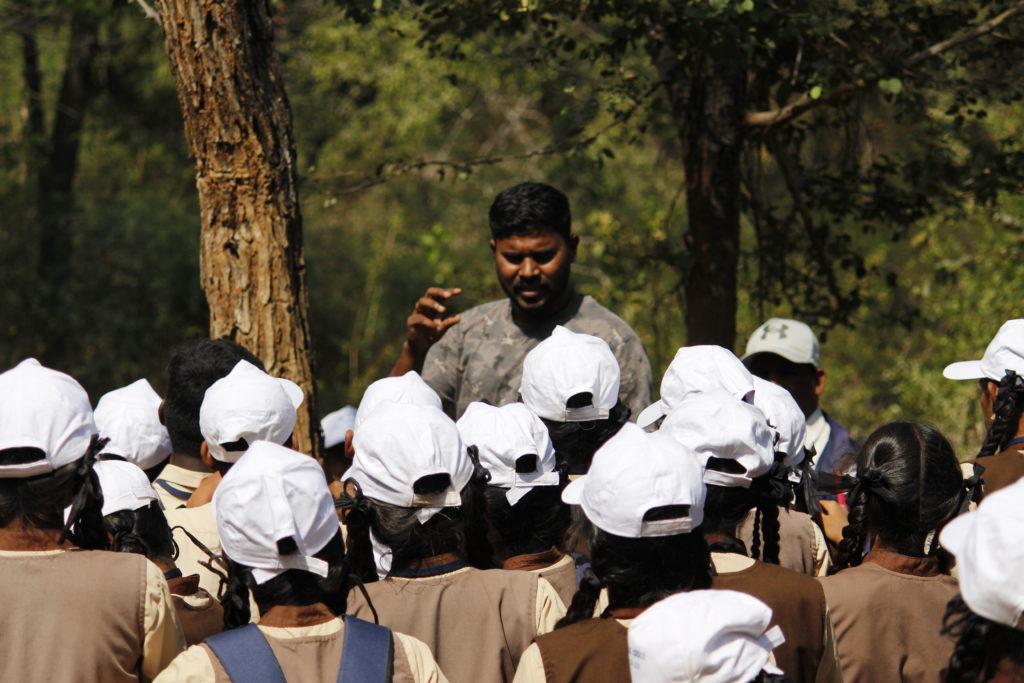
Are you a birder? What about bird watching excites you?
Yes! I was very interested in animals at the beginning, but due to a lack of opportunities, I could not see them. There were times when I got a chance to go inside the forest, but I didn’t spot any wild animals, and I turned back disappointed. Those times, when I would be very upset, I was encouraged to watch birds by my mentor Mr. Santhosh Pavagada. It was through him that I learnt to observe the movements of birds and started spending more time watching birds.
Meanwhile I had developed a deep connection with birds without even being aware of it. As a keen observer of birds, several things fascinated me about them. Most notably, I was amazed to see Baya Weavers nesting in the branches of trees bent over a lake at my relative’s farm. Their beautiful nests, built with just their beaks and legs, the spot they picked, all of this encouraged me to learn more about birds.
When and how did you get interested in bird/nature education?
From a young age, I was closely associated with the forest since my hometown was near it. I would often tag along with my friend who used to take goats into the forest for grazing. The moment we approached the forest, I would have some turmoil in my head, worried about what to do if we were attacked by a wild animal, yet the desolate landscape, the breeze, and the bird calls I had never heard before would make me feel elated.
I had no specific goal or guidance until 2013, when I got connected to a wildlife conservation group called Vanajagruti who had visited our college to screen a documentary on wildlife. Since I already had great interest in wildlife, I kept in touch with them regularly, joined them as a volunteer during my free time, participated in the environmental protection activities they were doing, conveyed the importance of wildlife to the local people, school students, religious leaders, people’s representatives, and in turn I gained a lot of knowledge. Because of this I was able to actively involve myself in wildlife conservation.
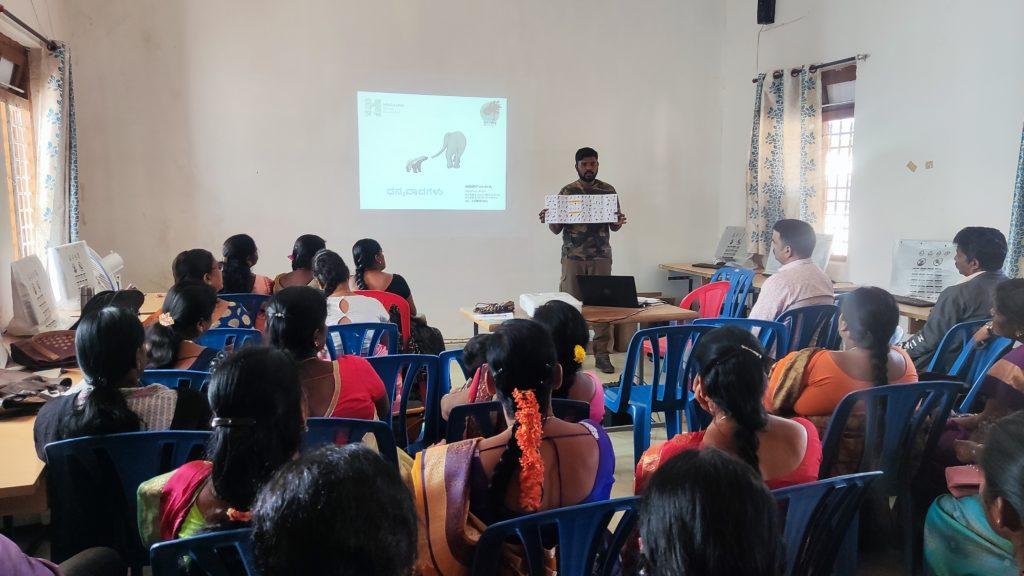
What do you hope to achieve through your education work?
Our district is portrayed as a district which is economically, socially and educationally underdeveloped. But in the entire state of Karnataka, our district is well known for its rich forests and valuable biodiversity. Only a few of us know the importance of our local forest that has such a wonderful biota, ironically many are not well informed about its importance and conservation.
My intention is to introduce people to this unique biodiversity and to encourage students, local communities, people’s representatives, and religious leaders to get involved in environmental protection in order to protect wildlife and their habitat from getting destroyed.
Why do you believe it is important for children to learn about birds or connect with nature?
Children are very attuned to nature. Introducing them to nature at an early age can instil an interest in the natural world, and through them can try to bring about attitudinal change towards nature in their family members. Changes in children have a positive impact on their families and in the schools.
What tools or resources have helped you in teaching about birds? Can you describe an approach that has worked exceptionally well for you?
At our Holématthi Nature Information Center we have put up display boards about birds with small details. Through these boards we can easily inform children about the birds and help them to connect with it. Apart from that, the Pocket Guide developed by Early Bird was very useful for us. Since the information in it was mostly about our local birds, this pocket guide was very useful to inform the visitors to our information centre or the local schools that we are in contact with about the birds we can find in our surroundings. It could be the colour of the bird or their patterns, Binoculars help children to see these things very easily and very closely. Early Bird Flashcards and some books like the Birds of Indian subcontinent also helped us a lot.
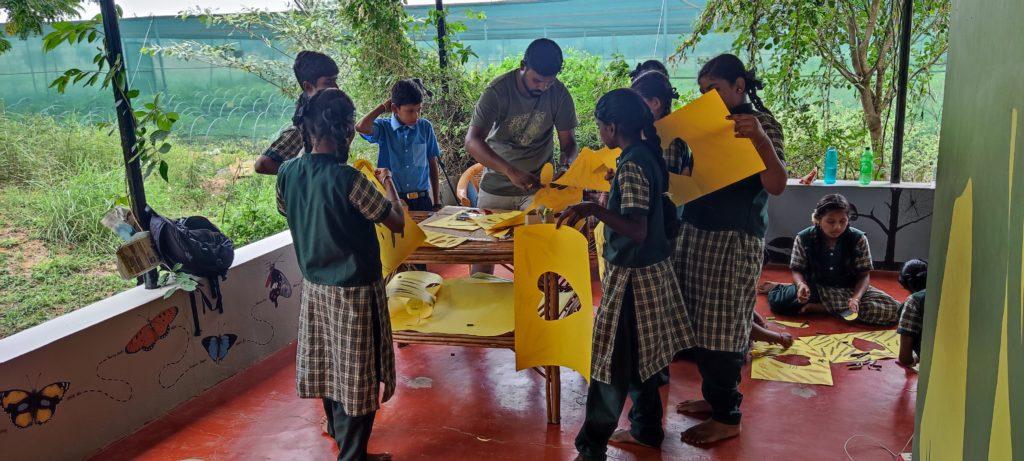
Have you encountered a significant challenge as a bird/nature educator, how did you overcome it?
Of course yes! There were many challenges in the initial days.
In order to reach out to children and share information about the environment with them, permission from the school or local authorities was essential. We have to convince high level officials and school teachers to get approvals to allow us to conduct the programmes which is a very difficult task.
When I started working five years ago, I didn’t get a single positive feedback from the teachers. To conduct any program we would go to the school and request a lot and then get permission. But since two to three years they understand the activities we do and our bonding with them. Now they themselves contact us and request us to do the program in their schools.
By keeping teachers and education department in the loop in all our activities and including them in the programs and maintaining a continuous association with them, we will be able to overcome many challenges.
Do share any memorable moment or experience you have had in teaching kids about birds/nature. Can you recall any insightful instance that shaped your perspective?
During the initial days of working as a nature educator at the Holématthi Nature Information Center, I would visit each school in the landscape and request the authorities to get the students to our Information Centre. During one such visit, the Headmaster was rude and did not cooperate. After a few days children from another school visited our Information Centre, which also included the Headmaster’s son.
After visiting our Information Centre, the boy shared what he had learned with his parents. Our work impressed his father so much that he asked us to allow his school students to visit the Information Centre. Additionally, he visited the Centre with his students and expressed his joy and encouragement. He also encouraged other schools’ headmasters to take their students to our Information Centre.
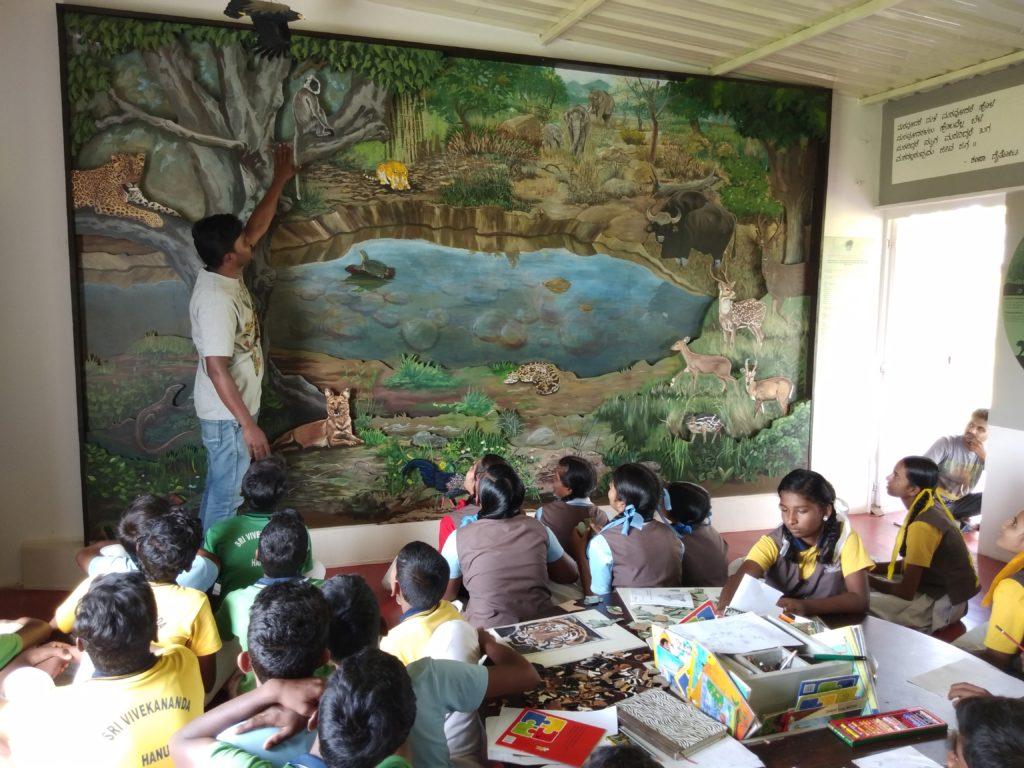
Have you noticed any changes in your learners after they received exposure to birds and nature-based learning? If yes, what are they? If not, why do you think that is?
Yes indeed I have noticed changes in several people who have changed their attitude towards the environment.
We organise several activities related to the environment and wildlife for the children who visit our information centre, one of which is bird watching. In order to introduce birds to the teachers and students, I organised a bird watching program for them. Initially they would identify only a handful of birds, but later they learnt to identify more than 30 species of birds.Besides, those who used to earlier see birds and simply move on, now observe different activities of birds, calls, habitat and nesting behaviour.
Teachers are doing a great job of introducing children to the birds that can be found around their school during their free time. This change in school teachers and students is very important from the point of view of nature conservation. In addition, the local people here share any information related to the environment with us and reach out to us if they need information.
Many who joined us in nature conservation activities as volunteers, have now chosen this as their profession and are contributing to the environment in their own way.
What message would you have for your fellow educators, or somebody starting out in their nature education journey?
If we want to introduce the environment to children or locals, it is very important to first inform them about the biodiversity around them, so that they can quickly connect with nature. Instead of teaching them the difficult scientific names of some other part of the world, in my opinion it is very important to convey to them the speciality of their local environment in their own local language
Environmental protection is not something that can be achieved in just a couple of days by a single person, it is a long-term process and the cooperation of local communities is essential for this. It is very important to understand our purpose and convey the same without causing any trouble to others and work together with them. This way, we can see better results in the near future.
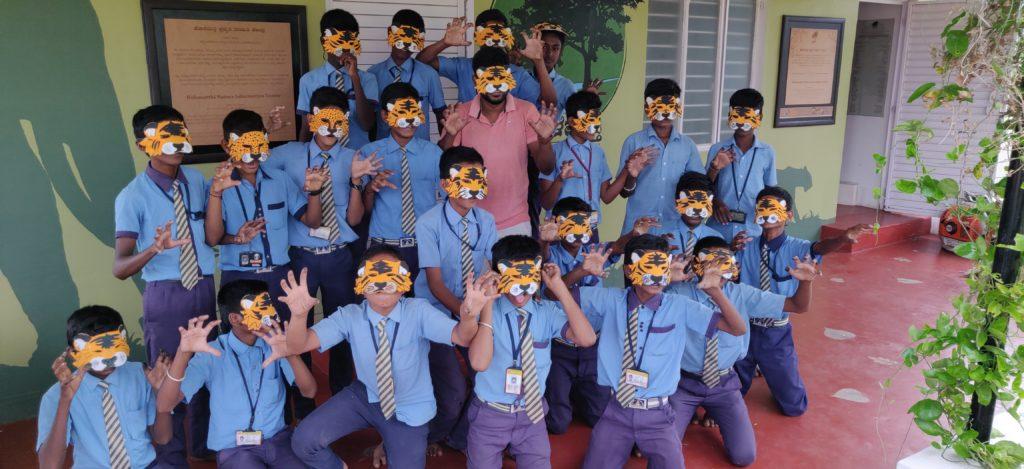
Abhishek was one of the Earth Educator fellows, a fellowship established by Youth Conservation Action Network in 2022. The fellowship gave him an opportunity to work on his passion project titled “Journey to Protect the Honey badger”. He has developed an activity booklet for children as part of this project “Ranga and his loving forest”

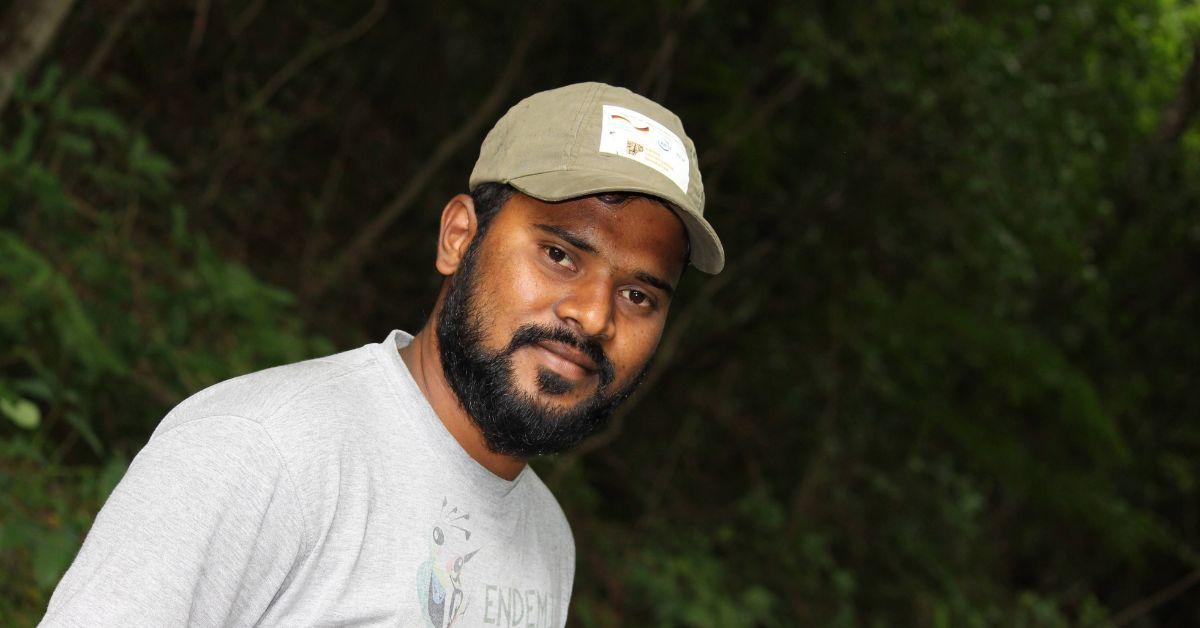
I recently completed my master with Zoology as main subject, and also completed dissertation on Spider, taxonomy, Behavior and diversity study in and around anand district, from Sardar patel University, vallabh vidyanagar, anand , Gujarat. during my masters study I was conduct bird Walk and insect walk for students of bachelor’s and master’s student of Zoology. during my bachelor’s and master’s studies I was attend many bird surveys in Gujarat and once in Madhy Pradesh as well as in Maharashtra also. now I wish to start an initiative with this type of activities such as, bird watching, insect walk, and nature related activities.. but I have no idea about how to join early bird as instructor pr naturalist or birder can you help me in this direction.